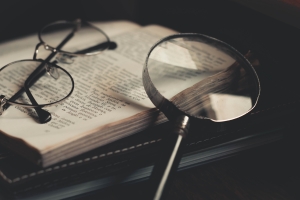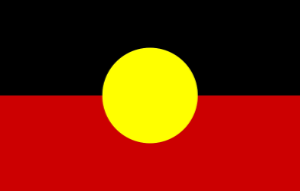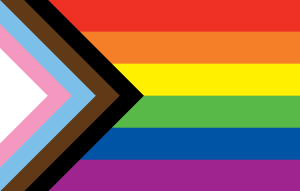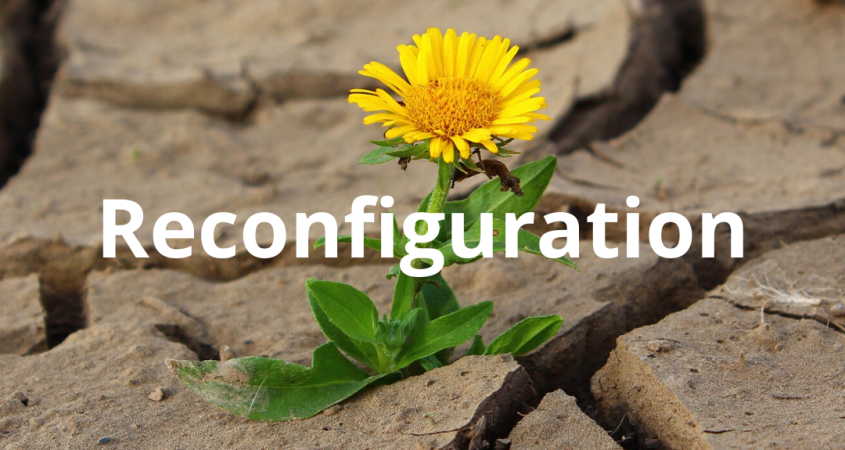After Trauma and Loss – Reconfiguring Life around Empty and Painful Spaces
I’ve acknowledged in other Blogs that our experience with loss begins when we leave the known world – the safe cocoon of our mother’s womb – and enter the unknown world of everyday life with all of its challenges. The nature of the losses we experience from that point, and the way we learn how to live with them, helps to determine who we become.
Loss is loss, and no matter what the loss is, or how it occurs, we can only grieve with 100% of our being. Our reactions will be characteristic of who we are, and will also be influenced by the environment in which we grieve. If physical or emotional trauma is involved, our reactions are likely to be a very intense 100%, but no matter how severe the event that causes loss, or how intense our reactions, most of us can learn to live with empty spaces and emotional and physical pain IF we receive the right kind of compassionate support.
The ‘right kind of support’ involves strategies that help us to manage surges of feeling, flash backs, and physical pain. All of our senses may need soothing, with perhaps one more affected than others.
I often use physical analogies when describing grief and trauma, for two reasons: first, our reactions often include physical sensations like nausea, butterflies in the gut, muscle tension or spasm, headaches, heartache, inability to concentrate and retain information, lack of energy or conversely, agitation and hyperactivity, as well as generalised aches and pains. Second, it’s often easier for most of us to understand what we can see, and most of us can visualise physical analogies.
Our reactions to trauma and grief include changes in brain chemistry. Some of these changes are helpful, nature’s way of making us slow down and focus on what is simple and manageable until we learn how to understand and manage the strange new world we find ourselves living in. All of our senses respond differently for a while. We are often hypersensitive to sight, sound, touch, taste, smell, with our fight, flight, freeze button easily aroused. Most of us are on high alert, ready to protect ourselves and those we care about from further threat.
 In the weeks and months following what feels like a catastrophic event, with the ‘right support’, those chemicals gradually subside. It would be impossible for any of us to live indefinitely, 24 hours a day, on high alert. Necessary tasks would become overwhelmingly difficult and everyday life would come to a grinding halt.
In the weeks and months following what feels like a catastrophic event, with the ‘right support’, those chemicals gradually subside. It would be impossible for any of us to live indefinitely, 24 hours a day, on high alert. Necessary tasks would become overwhelmingly difficult and everyday life would come to a grinding halt.
Fortunately, nature and compassionate support enable most of us to slowly regain control over our lives and develop strategies to manage surges of emotion. However, for the rest of our lives, overtiredness, illness and life events are likely to stimulate ‘break through emotional bleeding’ , often taking us by surprise, and temporarily convincing us we are going backwards. At these times we may need a trained, compassionate eye to see what’s happening, to listen to our distress, and to provide reassurance that these ‘episodes’ are a natural part of the terrain of trauma and grief.
Occasionally, our brain chemistry, or the environment, lets us down and we can become stuck in a well worn groove that makes us despair of ever regaining control, or of ever feeling hopeful about the future. When that happens, most of us benefit from seeing a competent counsellor.
Trained eyes and listening ears – The role of Counsellors and Support People
 After trauma or bereavement, many people benefit from the help of a compassionate and competent counsellor. If the person we see is the right fit for us, we are likely to feel almost immediate relief, as if we’ve found a life raft in a turbulent sea. The counsellor will provide reassurance that, as impossible as it may seem at the moment, we’ll learn to manage whatever is happening, if we take important steps, together.
After trauma or bereavement, many people benefit from the help of a compassionate and competent counsellor. If the person we see is the right fit for us, we are likely to feel almost immediate relief, as if we’ve found a life raft in a turbulent sea. The counsellor will provide reassurance that, as impossible as it may seem at the moment, we’ll learn to manage whatever is happening, if we take important steps, together.
Because painful thoughts and feelings are brought out into the light of day in counselling sessions, we may not always leave with a spring in our step, but once we’ve processed the session content, and our reactions, we are likely to have a sense of achievement – of moving forward, even if some steps seem as if we are going backwards for a little while.
The initial changes we make as a result of the teamwork we establish with our counsellor are often visible to others, and felt by us. As time goes on, changes become more subtle, perhaps to the point that we tell ourselves we aren’t making progress at all. We might begin asking ourselves questions. Maybe counselling isn’t helping? Maybe we need a new counsellor? At this point, we need a trusted other, hopefully our counsellor, to help us ‘see’ what might not be obvious to us. That feeling of ‘stuckness’, or lack of progress, may need a touch of ‘brain retraining’.
Brain Re-training
For those who are journal writers, it’s usually much easier to assess progress via the written word. Reading back over our writing, from the starting point to now, can be revealing and reassuring.
I recently moved house and when I was unpacking, re-read my own journal of many years ago, written in the first year after my daughter died. It was certainly a revealing and confronting experience, but also very reassuring. I hardly recognised the person who wrote the original entries, the person revealed in the photos I’d included, and the letters I’d written to my daughter. I’m so glad that I kept a journal., and glad that I wrote a grief journal for others to use. For anyone interested, copies can be obtained from ‘A Friends’ Place’.
Back to the ‘brain re-training’ I mentioned.
Six months ago, I had traumatising and disfiguring facial surgery because of a rare and life threatening skin cancer. Photographic images were very confronting indeed. The skill of the two surgeons involved in my treatment was obvious in the changes they managed to create then, and over the next three months. Progress was clear to me and everyone else, and I was grateful. In months 5-6, elation was replaced by disappointment and some loss of hope for a positive visual outcome.
My surgeon saw things differently – he remained delighted by the changes he could clearly see, changes which were invisible to me. I’d been having treatment every month and at this latest visit he told me I needed a longer break – time to process what has happened so far, and to train my brain to see, feel, acknowledge and appreciate small changes. I’m glad of the break and now understand what he means by re-training my brain – the strategies he suggested for doing this are working! Positive changes ARE still happening, even if more slowly than I would like.
During these weeks of healing, I’ve thought often of all the bereaved and traumatised people I’ve worked with over the years, and the similarities in our different experiences. We all shared an initial painful experience that left a sense of ‘gaping emptiness’ (the meaning of the term chaos, or the Greek word Khaos)– literal in my case, symbolic in theirs. We all found a life raft in the form of a compassionate and competent other, and rekindled hope for the future. Initial change was obvious, but as time went on, the changes became too subtle at times to be clearly seen by the naked or untrained eye.
My surgeon wears special glasses that allow him to do micro surgery, so that small changes are much more easily seen by him. Plus, he has years of experience that give him confidence about what can be achieved, one step at a time. He can readily imagine the future landscape. As a counsellor, I had a version of those special glasses, and enough years of experience to assure me that together, my clients and I would eventually find reason for them to believe in a hopeful future, one step at a time.
Human beings are pretty resilient creatures most of the time. We survive an amazing variety of life experiences, learn from most of them, and often use what we learn to help others. Bereaved children tell us this all the time – they wish the person they love was alive, but value the strength they discover in themselves as they learn how to live with loss. They know that when a peer at school is bereaved, they have less fear of approaching them than non bereaved kids, and they like the feeling of being able to provide compassionate support for others.
The impact of Environment on Trauma and Grief
Painful experiences, physical, emotional, or both – are accommodated more successfully in our lives if the environment is supportive.
The life changing impact of the Covid-19 virus on our lifestyle has made most of us more aware of the invaluable environmental ingredients that have enhanced our sense of well being in the past, and that we may have often taken for granted.
While grateful for phones, FaceTime, Zoom, email and text messages, most of us have missed face to face contact and loving hugs from friends and relatives. Grieving and traumatised folk have also missed the variety of distractions that provide necessary time out from pain. On the other hand, we’ve probably had more quiet time, time to think about what we really need, and what we can do without.
The pace of life has slowed – great for some, difficult for others. As an individual, a family, and a nation, we may all feel as if we are getting nowhere fast. Hope for an exciting future may have been replaced by a sense of emotional heaviness that suggests that we are likely to be stuck in survival mode forever. For anyone already traumatised or grieving, these feelings are likely to be an exaggerated version of those experienced by the rest of the population. Some folk become resigned, some nurture a quiet sense of hope, others rebel.
 But change IS happening. We ARE leaning how to live in a changed world. We will gradually find things to look forward to. Perhaps we all need a bit of the ‘brain re-training’ I’ve been talking about – we may need to don the symbolic glasses that enable us to see what is small – the little changes that are occurring weekly now, some almost daily.
But change IS happening. We ARE leaning how to live in a changed world. We will gradually find things to look forward to. Perhaps we all need a bit of the ‘brain re-training’ I’ve been talking about – we may need to don the symbolic glasses that enable us to see what is small – the little changes that are occurring weekly now, some almost daily.
If you need symbolic ‘glasses’ to help you see the progress you have made, and are continuing to make in living with empty heart spaces, bruised emotions, or damaged trust, maybe it’s time to talk with a counsellor. Hopefully you already have one. If not, the counsellors at ‘A Friends’ Place’ are great people for creating the kind of environment that facilitates your ability to see, feel and appreciate the micro and macro changes that are indications of your inner strength, of your ability to build new life around empty heart spaces.
Help
Help is always available – at ‘A Friend’s Place’ or by contacting our outreach service.
Dianne McKissock OAM
NCCG Outreach Support Service
Email support for dying and bereaved people and anyone involved in their care






